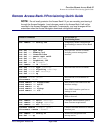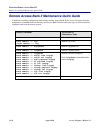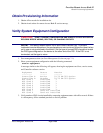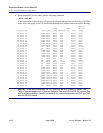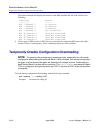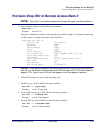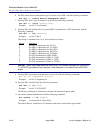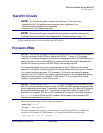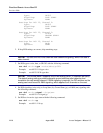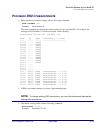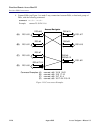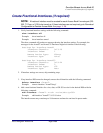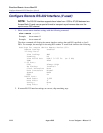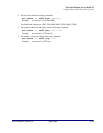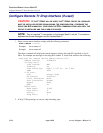
Access Navigator - Release 1.8 August 2003 11-17
Provision Remote Access Bank II
Test DS1 Circuits
Test DS1 Circuits
NOTE: The Access Navigator supports the following T1.403 loop tests:
• Responds to ESF bit patterned loop requests (when loopdetect is on)
• Generates ESF bit patterned loop requests
• Generates SF CSU inband loopcodes
NOTE: The Access Navigator provides line and payload loopback commands for
troubleshooting line problems. See Diagnostics & Troubleshooting on page 15-1.
Follow standard practices to test subscriber drop DS1 circuits.
Provision DS0s
NOTE: The Access Navigator configures crossconnections inside the Access Bank II.
The user can specify which DS0s to use for the RS-232, T1 drop, or V.35 remote
interfaces. The Access Navigator connects any unassigned voice or GR-303 DS0s to the
analog interface. If you connect DS0s to a remote interface, the Access Navigator will
connect the remaining voice or GR-303 DS0s to the analog channels.
The Access Navigator uses a fixed mapping between the T1 DS0s and the analog
channels. This permits unused analog lines to be pre-wired and turned up when needed.
If no remote interfaces are used, DS0 channels 1 to 24 will be connected to analog
channels 1 to 24. If a DS0 is connected to a remote interface, the corresponding analog
channel will not be used. For example, if DS0 channel 15 is connected to a remote
interface, analog channel 15 will not be used.
NOTE: Commands such as ds0 <n:ch> require the operator to enter both the DS1
and DS0 channel number or channel range. The DS1 and DS0 numbers are entered with
a colon separating the numbers. For example, the channel list for DS1 #4 and DS0 channel
#8 would be entered as ds0 4:8. The channel list may also contain a range of DS0
channels. For example, DS1 #6 and DS0 channels #1 through #12 would be entered as
ds0 6:1-12. A colon follows the DS1 number, and the beginning and ending DS0
channels are separated by a hyphen.
1. Show current DS0 settings with the following command:
show ds0 <n:ch>
Example: show ds0 25:1-4
The show command will produce a status message for each DS1 specified. For example, the
message for DS1 number 25, DS0 channels 1 to 4 would look similar to the following:
Settings for DS1 13, Channel 1:



